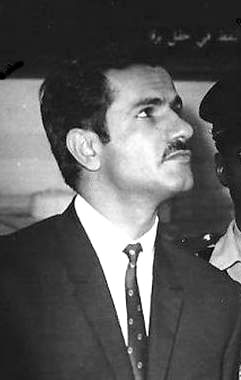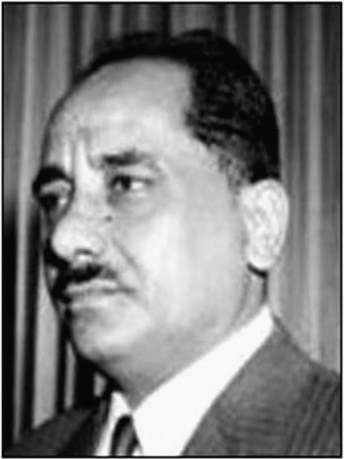|
Southern Yemen
South Yemen, officially the People's Democratic Republic of Yemen, abbreviated to Democratic Yemen, was a country in South Arabia that existed in what is now southeast Yemen from 1967 until its unification with the Yemen Arab Republic in 1990. The sole communist state in the Middle East and the Arab world, it comprised the southern and eastern governorates of the present-day Republic of Yemen, including the Socotra Archipelago. It bordered the Yemen Arab Republic to the northwest, Saudi Arabia to the north, Oman to the east, the Arabian Sea to the southeast, and the Gulf of Aden to the south. Its capital and largest city was Aden. South Yemen's origins can be traced to 1874 with the creation of the British Colony of Aden and the Aden Protectorate, which consisted of two-thirds of present-day Yemen. Prior to 1937, what was to become the Colony of Aden had been governed as a part of British India, originally as the Aden Settlement subordinate to the Bombay Presidency and the ... [...More Info...] [...Related Items...] OR: [Wikipedia] [Google] [Baidu] |
Emblem Of Yemen
The Emblem of Yemen depicts a golden eagle of Saladin with a scroll between its claws. On the scroll is written the name of the country in ('The Yemeni Republic'). The chest of the eagle contains a shield that depicts a coffee plant and the Marib Dam, with seven blue wavy stripes below. The flagstaffs on the right and left of the eagle hold the flag of Yemen. Historical emblems North Yemen From 1945 to 1990, Yemen was split into North and South. The North had an emblem more similar to the present day one, and its shield has similarities with the shield of the former Mutawakkilite Kingdom of Yemen. File:Yemen İmamate Coat.png, Emblem of Yahya Muhammad Hamid ed-Din File:Coat of arms of the kingdom of Yemen (1956-1962).svg, Coat of arms of the Mutawakkilite Kingdom of Yemen (1918–1970) File:Coat of arms of Yemen Arab Republic 1962-1966.svg, Coat of arms of the Yemen Arab Republic (1962–1966) File:Coat of arms of Yemen Arab Republic 1966-1974.svg, Coat of arms of the Yeme ... [...More Info...] [...Related Items...] OR: [Wikipedia] [Google] [Baidu] |
Prime Minister Of South Yemen
The People's Democratic Republic of Yemen, commonly referred to as South Yemen, became independent as the People's Republic of South Yemen in 1967. The Prime Minister, appointed by the President of South Yemen, President, served as the head of government. The first Prime Minister was not appointed until April of 1969. Prime Ministers of the People's Republic of South Yemen, 1969-1970 Prime Ministers of the People's Democratic Republic of Yemen, 1970-1990 For Prime Ministers after the unification of Yemen in 1990, see Prime Minister of Yemen. Prime Ministers of the Democratic Republic of Yemen, 1994 South Yemen also rebelled as the Democratic Republic of Yemen for a period of weeks in 1994. References Lists of prime ministers, Yemen, Prime Minister of South History of Yemen Prime ministers of South Yemen, Government of Yemen Yemen-related lists, Prime Minister {{Yemen-stub ... [...More Info...] [...Related Items...] OR: [Wikipedia] [Google] [Baidu] |
Haidar Abu Bakr Al-Attas
Haidar Abu Bakr al-Attas (; born 5 April 1939) is a Yemeni politician. He was appointed Prime Minister of Yemen by President Ali Abdullah Saleh when the People's Democratic Republic of Yemen and Yemen Arab Republic united in 1990 to form present-day Yemen. Al-Attas served until 1994. He is a member of the Yemeni Socialist Party. Before unification, al-Attas served as Prime Minister (1985–1986) and Chairman of the Presidium of the Supreme People's Council (1986–1990) in the southern PDRY. When Aden Aden () is a port city located in Yemen in the southern part of the Arabian peninsula, on the north coast of the Gulf of Aden, positioned near the eastern approach to the Red Sea. It is situated approximately 170 km (110 mi) east of ... in southern Yemen seceded in May 1994, al-Attas served as the Prime Minister of the secessionist Democratic Republic of Yemen until the rebellion ended less than two months later. References 1939 births Living peopl ... [...More Info...] [...Related Items...] OR: [Wikipedia] [Google] [Baidu] |
Qahtan Al-Shaabi
Qahtan Muhammad al-Shaabi (; 1920 – 7 July 1981) was the first President of the People's Republic of South Yemen. Al-Shaabi's National Liberation Front (NLF) political organisation wrested control of the country from the British and won political supremacy over the opposition Front for the Liberation of Occupied South Yemen (FLOSY) in 1967. On 30 November 1967, the Protectorate of South Arabia was declared independent as the People's Republic of South Yemen, with al-Shaabi as President. Al-Shaabi held the presidency until 22 June 1969, when a hard-line Marxist group from within his own NLF seized control. He was replaced by Salim Rubai Ali and jailed, then placed under house arrest until the 1970s, and lived quietly in Aden from his release until his death in 1981. Al-Shaabi was originally an agricultural officer from Lahej who fled to Cairo in 1958. In 1962, he was announced the head of a National Liberation Army, formed in Egypt, and in 1963 or 1965, he was chosen the fou ... [...More Info...] [...Related Items...] OR: [Wikipedia] [Google] [Baidu] |
President Of South Yemen
The People's Democratic Republic of Yemen, commonly referred to as South Yemen, became independent as the People's Republic of South Yemen on 30 November 1967. The President of the Republic served as head of state, appointing a Prime Minister to serve as head of government. On 22 June 1969, the left wing of National Liberation Front (NLF) took power in the country, reorganizing the government. The Chairman of the Presidential Council became the head of state. This was followed closely in 1970 by the renaming of the country to the People's Democratic Republic of Yemen. Another reorganization in 1978 after Yemen Socialist Party foundation in October made the head of state's title Chairman of the Presidium of the Supreme People's Council. This lasted until unification with the Yemen Arab Republic on 22 May 1990, when the then-Chairman became the Prime Minister of the united Yemen. President of the People's Republic of South Yemen Chairman of the Presidential Council The Presi ... [...More Info...] [...Related Items...] OR: [Wikipedia] [Google] [Baidu] |
Ali Salim Al-Beidh
Ali Salem al-Beidh (; born 10 February 1939) is a Yemeni Maoist politician who served as the General Secretary of the Yemeni Socialist Party (YSP) in South Yemen and as Vice President of Yemen following the unification in 1990. He left the unification government in 1993, sparking the 1994 civil war in Yemen and then went into exile in Oman. He is a leader of the Southern independence movement known as Al Hirak. Leadership in South Yemen He studied for a Commerce degree and became a School Teacher in Mukalla in 1961. He joined the National Liberation Front in 1963 as the Local Committee founder in Mukalla, and went underground in 1965. In 1966 he was admitted into the Hadramawt Provincial Committee of the NLF. After independence, he joined the YSP. In 1971 he was selected as the General Secretary of the Hadhramawt Provincial Committee and was admitted into the YSP National Central Committee as a Candidate-Member. Selected as Full Member of the Central Committee in 1975, we ... [...More Info...] [...Related Items...] OR: [Wikipedia] [Google] [Baidu] |
Ali Nasir Muhammad
Ali Nasir Muhammad Al-Husani (; born 31 December 1939) is a Yemeni former politician and leader of South Yemen who served as Secretary-General of the Yemeni Socialist Party between 1980 and 1986. He was president of South Yemen twice and once the Prime Minister. He served as the Prime Minister from 2 August 1971 until 14 February 1985 and as Chairman of the Presidential Council from 26 June 1978, after the ouster and execution of Salim Rubai Ali, until 27 December 1978. In April 1980, South Yemeni president Abdul Fattah Ismail resigned, officially for health reasons, and moved to Moscow. His successor was Ali Nasir Muhammad, who was generally seen as a more pragmatic and moderate leader than his predecessor. Mohammad was less committed to Marxist-Leninist ideology than Ismail and relaxed various socialist policies in the PDRY. His rule was also marked by his moderate approach towards foreign affairs, as evidenced by his less interventionist stance towards both North Yemen and neig ... [...More Info...] [...Related Items...] OR: [Wikipedia] [Google] [Baidu] |
Abdul Fattah Ismail
Abdul Fattah Ismail Ali Al-Jawfi (; 28 July 1939 – 13 January 1986) was a Yemeni Marxist politician and revolutionary who was the ''de facto'' leader of South Yemen from 1978 to 1980 after the overthrow of President Salim Rubaya Ali. He served as President of South Yemen, Chairman of the Presidium of the Supreme People's Council (head of state) and founder, chief ideologue and first leader of the Yemeni Socialist Party from 21 December 1978 to 21 April 1980. He died under mysterious circumstances during the 1986 South Yemen Civil War and his body was never found. Biography Abdul Fattah was born on 28 July 1939 in the Al-Hujariah district of the Taiz Governorate in Kingdom of Yemen, North Yemen. Though his father was a faqīh (Islamic jurist), he had a poor and rural upbringing. He subsequently followed his elder brother to Aden (which was then a Aden Protectorate, British protectorate) where he was educated at the Ahliah School in Tawahi (Aden), Tawahi district. When he was ap ... [...More Info...] [...Related Items...] OR: [Wikipedia] [Google] [Baidu] |
Secretary-General Of The Yemeni Socialist Party
The South Yemen, People's Democratic Republic of Yemen became independent as the "People's Republic of Southern Yemen" in November 1967, after the United Kingdom, British withdrawal from the Federation of South Arabia and the Protectorate of South Arabia. In May 1990, South Yemen Yemeni unification, unified with the Yemen Arab Republic (commonly referred to as North Yemen) to form the united Yemen, Republic of Yemen. During the Yemeni Civil War (1994), May–July 1994 Civil War, South Yemen seceded from the united Yemen and established the short-lived Democratic Republic of Yemen. Heads of party See also *President of South Yemen *Prime Minister of South Yemen References ;Citations ;Bibliography * External linksWorld StatesmenSouth Yemen {{PDRY topics Lists of national presidents, s Lists of prime ministers by country, Yemen Presidents of South Yemen, * Chairmen of the Presidium of the Supreme People's Council Prime ministers of South Yemen, * Government of Yemen Yeme ... [...More Info...] [...Related Items...] OR: [Wikipedia] [Google] [Baidu] |
Marxist-Leninist State
A communist state, also known as a Marxist–Leninist state, is a one-party state in which the totality of the power belongs to a party adhering to some form of Marxism–Leninism, a branch of the communist ideology. Marxism–Leninism was the state ideology of the Soviet Union, the Comintern after its Bolshevisation, and the communist states within the Comecon, the Eastern Bloc, and the Warsaw Pact. After the peak of Marxism–Leninism, when many communist states were established, the Revolutions of 1989 brought down most of the communist states; however, Communism remained the official ideology of the ruling parties of China, Cuba, Laos, Vietnam, and to a lesser extent, North Korea. During the later part of the 20th century, before the Revolutions of 1989, around one-third of the world's population lived in communist states. Communist states are typically authoritarian and are typically administered through democratic centralism by a single centralised communist party a ... [...More Info...] [...Related Items...] OR: [Wikipedia] [Google] [Baidu] |




